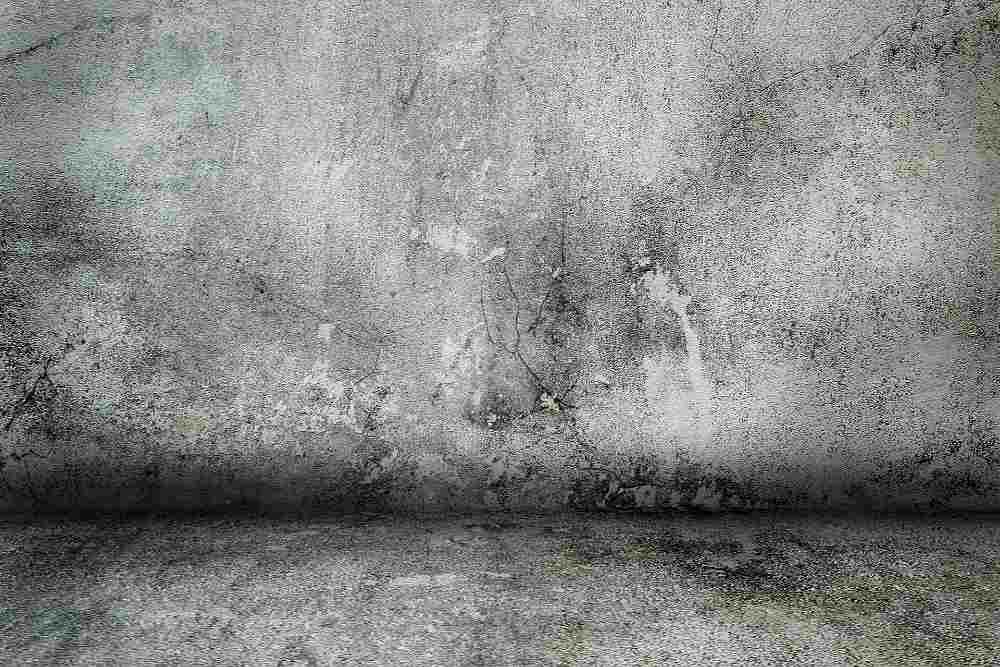Do your basement walls have black on mold on concrete? If you are a homeowner in the Kansas City metro area you know all too well how concrete mold can easily become a problem. Most of us, Kansas Citians, have to had to fight the battle of leaky foundations and frequent floor drain backups. Dealing with water damage and mold has become a common problem to so many property owners throughout the Kansas City metro area. Here is a simple overview of why mold grows on concrete and what needs to be done to clean and prevent future mold growth.
Concrete Mold is a Reality, Don’t Believe the Myth!
One of the many myths about mold growth is that “mold cannot grow on nonporous surfaces like concrete”. These statements are obviously coming from amateurs who are sitting behind a desk and have no real working knowledge or experience with mold. The truth is that mold can grow wherever there is an “organic food source”, including on concrete surfaces. Concrete in and of itself is not an appropriate food source for mold, but the dust that easily accumulates on and sticks to concrete is! With the addition of moisture that comes from leaks or humidity, even concrete can provide the ingredients needed for mold to grow, thrive and spread. It will find damp and dusty areas and begin to grow. Because concrete has a smooth surface, removing mold is thankfully a much easier process than other surfaces and materials.
Even so, the EPA still recommends a professional assessment if the molded area is greater than 10 square feet. This limitation may seem overkill, however, you must understand the volatile and powdery substance of mold and how easily the spores can become airborne and circulated throughout the home. If there is concrete mold, it can easily be brushed against with clothing or tracked into other parts of the house on shoes. Making sure you get all of it is important to the health of your family and the upkeep of your home.
How to Clean Mold Off of Concrete
Concrete mold under 10 square feet, can be cleaned with a mixture of hot water and dish-washing soap. After washing, ventilate the room very well. Do not use fans as that will cause any spores to become airborne. Also, do not use bleach as bleach does not kill mold. Place a dehumidifier in the room based on appropriate square feet to remove humidity. Reassess the situation after three days. If there is still discoloration, odor, mustiness or powdery texture, call a professional.
To get rid of growing black mold on concrete, you can clean it with a mixture of hot water and dishwashing soap. Ventilate the room well after cleaning so it can dry. Mold grows in damp environments, so to keep the mold from coming back, it must dry completely. Do not use fans to help the drying process!! Because the airflow can cause the mold spores to become airborne and travel to other areas of the house. You may have heard to use bleach when trying to get rid of black mold. However, bleach does not actually remove mold from concrete.
Dehumidification is Key
To help dry the room, a dehumidifier is essential. When looking for a dehumidifier for your home, it is important to check to see where the dehumidifier works best. Some dehumidifiers are best for a smaller room, such as a small office or bedroom. While others are made to run in a larger area like a basement. The dehumidifier you choose should suit the room you have cleaned the mold away from to help dry. After three days with the dehumidifier in the room, reassess. If there are still signs of mold, such as discoloration, odor, mustiness or powdery texture, call a professional. Painting over mold will only cause mold to continue to grow; and eat through the paint in a short period of time. Never cover the mold with paint. The mold must be removed and the area thoroughly cleaned.
Preventing Mold Growth on Concrete
Many times, concrete surfaces need to be sealed with a special formulated antimicrobial product to prevent mold from reoccurring. This is especially true for rock, concrete foundation walls found in our historic homes of Kansas City. Many of these homes were built before the implementation of poured concrete foundations, pre-1950s. At FreshStart, we provide an industry-leading 10-year mold-free warranty! Call today to speak with a mold professional about your mold concerns. We can provide a free, no-hassle estimate and professional assessment of your mold problem.
At FreshStart, we can remove black mold on concrete surfaces but also prevent the return of mold. With our special formulated antimicrobial coating process, we can prevent ongoing mold problems. Sometimes that is a necessary step for areas prone to prolonged elevated humidity. For a free estimate, or to talk to mold professional about any concerns you may have, call them.
